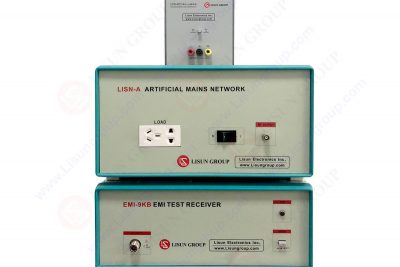
1. Introduction With the rapid development of modern science and technology, electronics, power electronics, and electrical equipment are more and more widely used. The high-density, wide-spectrum electromagnetic signals generated by them during operation fill the entire space, forming a complex electromagnetic environment. The complex electromagnetic environment requires electronic equipment and ...

Electromagnetic Interference (EMI) Testing is electronic noise that interferes with cable signals and reduces signal integrity. EMI is typically generated by sources of electromagnetic radiation such as motors and machines. Electromagnetic interference is an electromagnetic phenomenon that has been discovered for a long time. It was discovered almost at the same time as the phenomenon of electroma...

At present, the problem of electromagnetic compatibility of electronic products has attracted more and more attention. Especially developed countries in the world have formed a complete electromagnetic compatibility system. At the same time, our country is also establishing an electromagnetic compatibility system. Therefore, the realization of EMI testing of products is a passport to enter the int...

Introduction An EMI receiver measures electromagnetic disturbances by employing traditional stepped scans or ultrafast FFT-based time domain scans. This is done during the construction of the receiver. Additionally, it works effectively as a signal and spectrum analyzer. Usage of EMI Receiver 1. EMI test receivers are devices designed to detect electromagnetic emissions rigorously to guarantee t...

A crucial piece of equipment for EMC testing is a spectrum analyzer. Spectrum analyzers with EMC-specific capabilities have become much more affordable in recent years. Spectrum analyzers offer a wide variety of parameter settings and must be set up properly. This is done in order to produce measurements as close as possible to the specifications of the particular EMC standards that apply to the p...

Before a product is introduced to the market, EMC testing is necessary to obtain an Electromagnetic Emission and Immunity test certification. However, the cost of performing real EMC tests is high. The product needs to be tested in an EMC pre-compliance test lab before undergoing the actual EMC test. To make sure the device will pass the EMI/EMC compliance test, pre-compliance testing will replica...

EMC test is the full name of electro magnetic compatibility. It refers to the comprehensive evaluation of the electromagnetic field interference (EMI) and anti-interference ability (EMS) of electronic products. It is one of the important indicators of product quality. The measurement of electromagnetic compatibility is composed of test sites and test instruments Today, almost all lighting applic...

Electronic noise, also known as electromagnetic interference, impedes cable communications and weakens their integrity. Typically, machinery and motors that emit electromagnetic radiation serve as EMI receiver generators. Conducted interference and radiated interference are the two forms of EMI receivers. The coupling of signals from one electrical network to another electrical network over a con...

Electromagnetic interference is mainly divided into radiation type interference and conduction type interference. The electromagnetic interference transmitted through space belongs to radiation type, and the electromagnetic interference transmitted to the power grid through power lines belongs to conduction type According to IEC, CISPR, GB and other EMI specifications, conducted disturbance mainly...

With the development of science and technology, more and more digitized, high-speed electrical and electronic equipment is widely used in various fields of society, while promoting social development, the electromagnetic interference generated by the application of electrical and electronic equipment also brings electromagnetic pollution problems to society. While electromagnetic pollution and wat...

What is EMI receiver? Electromagnetic Interference (EMI receiver) is electronic noise that interferes with cable signals and reduces signal integrity. EMI Receiver is usually generated by electromagnetic radiation sources such as motors and machines. EMI Receiver (Electromagnetic Interference) has two types: conducted interference and radiated interference. Conducted interference refers to the cou...

EMI receiver system for EMI (Electromagnetic Interference) radiation conduction or conducted emissions testing. The EMI-9KB EMI receiver is produced by the full closure structure and strong electro-conductibility material, which has high shielding effect. Due to the new technology for the EMI Test System, it solved the instrument self-EMI problem. The test results are according to the internation...